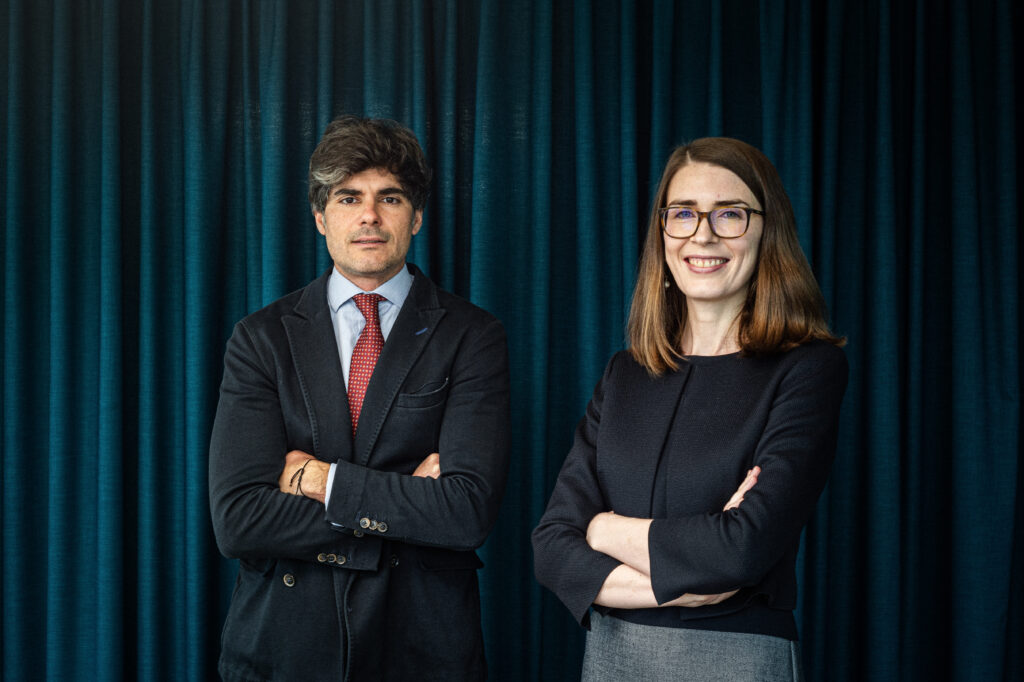In his report on the future of the single market presented this Spring to the European Council, Enrico Letta, among other things, advocated for the return of securitisation activity in Europe. He also emphasised the potential of “green securitisation” in contributing to financing the energy transition over the coming decades. According to European Commission forecasts, an additional €620 billion in investments will be needed annually to meet the objectives of the Green Deal and Repower EU. All possible levers, including securitisation, must be activated to achieve this.
Securitisation is a financial technique that allows a bank or other entity to transform its receivables or loans into negotiable financial securities. Developed in the United States from the 1970s, securitisation fell out of favour in 2008 following the Global Financial Crisis and reliance on mortgage-backed securities. In 2008, the annual total of securitisation issuances in Europe reached €700 billion. This figure remains far from current amounts: an annual average of €200 billion (€213 billion in 2023).
In a few lines at the heart of his report the former Italian Prime Minister sets out to restore legitimacy to securitisation, arguing it provides two key benefits: “broadening and diversifying the pool of assets available for investment and unlocking banks’ balance sheet capacity to facilitate additional financing.” These additional financial means can be used to ensure the growth of European businesses, particularly to finance the innovation required for a Net Zero future. Ideally, this would involve green securitisation products, which are currently only minimally used on the European market. According to AFME calculations, between January 2019 and June 2022, green securitisation issuances represented barely 1.4% of all green financial products offered in the European Union. In China, over the same period, their share reached 8.1%, and in the United States, 32.3%.

Paula Redondo Pereira, Head of Listing & Regulatory Affairs, Luxembourg for Finance
First common european standard
The primary cause lies in the low securitisation activity in Europe after the financial crisis. There are others reasons. Paula Redondo Pereira, Head of Listing & Regulatory Affairs at the Luxembourg Stock Exchange, which already displays green securitisation products on its Luxembourg Green Exchange (LGX), also highlights the absence of targeted guidelines or principles for green securitisation: “There are no dedicated EU-specific standards. In the current context, this could prove useful and provide the right incentives for issuers, while contributing trust and predictability amongst market participants and therefore facilitating adoption. Greenwashing is a concern, and this may have been putting off investors and issuers alike. An interesting development within the Current European regulatory framework is the inclusion of green securitisations under the EU Green Bonds (EU GB).”

There are no dedicated EU-specific standards. In the current context, this could prove useful and provide the right incentives for issuers.
This first common European standard dates from November 2023 – the publication of the EU Green Bond Regulation (EU GB Regulation) – and will come into force on 21 December 2024. Two main approaches were possible for this optional standard: requiring that green securitisations be backed by green assets or that the proceeds of the transaction be used to meet environmental objectives as defined in the European taxonomy.

Eimear O’Dwyer and Antonio Arenas Torres, respectively Counsel and Senior Associate for the law firm Clifford Chance Luxembourg
Use of proceeds
The second approach was chosen, clearly specifying that what counts is the use of proceeds by the originator (the entity behind the securitised loans). “It is possible that in the future the definition will evolve to the first approach, considering the environmental nature – compliance with the taxonomy – of the underlying assets. But currently, the volume of such assets is still too low, which would greatly limit green securitisation activity,” explain Eimear O’Dwyer and Antonio Arenas Torres, respectively Counsel and Senior Associate for the law firm Clifford Chance Luxembourg. But when it comes to assets, not everything is allowed either. “The EU GB Regulation requires that information on underlying assets be disclosed and has established a list of excluded areas.” These exclusions mainly concern activities related to the production and processing of fossil fuels.

The EU GB Regulation requires that information on underlying assets be disclosed and has established a list of excluded areas.
It should also be noted that this regulation does not cover synthetic securitisation. A green securitisation operation under the EU GB Regulation must be carried out through a vehicle practising “true sale” securitisation. There must be an effective transfer of assets to the entity, thus relieving the originator’s balance sheet and allowing for new loans. Just as the definition of green securitisation is likely to evolve with practice, it is possible that one day synthetic securitisation, which involves transferring the credit risk associated with assets through credit derivatives, as opposed to the asset itself, will be covered. However, the complexity of synthetic securitisation will require evolutions in the future before it can be integrated.

Andreas Heinzmann (Partner GKS Stockmann), Markus Zenz (Partner PwC Luxembourg) and Louis-Maël Cogis (Partner Simmons & Simmons)
The flexibility of the luxembourgish law
In Luxembourg’s financial centre, green securitisation is a growing area of interest. It brings together two strategic activities of the ecosystem: securitisation (1,500 vehicles and more than 6,000 compartments) and sustainable finance. The 2004 Luxembourg law is appealing due to its great flexibility – particularly the scope of action granted to securitisation vehicles – and its governance: allowing for legal segregation of compartments and limited recourse for investors, as well as the impossibility for investors to force the vehicle into bankruptcy.
At the head of the securitisation working group within the Luxembourg Capital Markets Association (LuxCMA), Andreas Heinzmann (Partner GKS Stockmann), Markus Zenz (Partner PwC Luxembourg) and Louis-Maël Cogis (Partner Simmons & Simmons) are optimistic about its development thanks to the expertise of the financial services sector. “Securitisation is back at the forefront to revive capital markets in Europe. There is clearly positive momentum. And for Luxembourg, the funds industry is very demanding of green-labelled instruments. Article 9 funds do not have enough green-labelled products to invest in.” This is also true for banks and many companies that have committed to directing part of their investments or financing into sustainable products.

Securitisation is back at the forefront to revive capital markets in Europe. There is clearly positive momentum.
Used well, the securitisation technique could bring capital to the energy transition. AFME has estimated the potential contribution at more than €300 billion by 2030. However, since the 2008 financial crisis, prudential rules have been significantly strengthened to better protect consumers, apparently to the point of discouraging some operators from launching such products. “It is necessary to relax the regulations if we truly want to see an increase in securitized assets,” say the officials at LuxCMA. And in the case of green securitisation, new safeguards will still be added to protect investors from the risks of greenwashing. The takeoff of green securitisation products in Europe may therefore require a certain degree of rule change. Reviving the idea of a Capital Markets Union, or Savings and Investment Union, at the European level is an opportunity to bring about that change.

